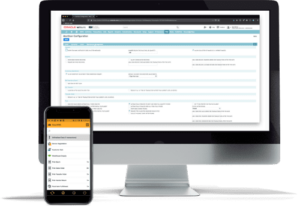
NetSuite WMS Implementation: Simplified Steps to a Successful Rollout
Implementing a Warehouse Management System (WMS) on NetSuite can transform your operations — but only if it’s done correctly. A well-executed NetSuite WMS implementation reduces picking errors, accelerates fulfilment, improves inventory accuracy and delivers measurable return on investment. Done badly, it creates disruption, frustrated staff and ballooning costs. This guide explains how to approach implementation with clarity, prioritise the right investments and avoid the common pitfalls so your project delivers fast, reliable results.
 Why a NetSuite-native WMS matters
Why a NetSuite-native WMS matters
Many organisations default to bolt-on or third-party WMS products that sit beside NetSuite. That can work, but it often introduces data latency, integration complexity and ongoing maintenance costs. A NetSuite-native WMS — one built as a SuiteApp — uses NetSuite as the single source of truth. That means real-time inventory updates, fewer reconciliation tasks and simpler reporting. When planning a NetSuite WMS implementation, prioritise native solutions to remove integration risk and shorten time to value.
Start with outcomes, not features
Begin by defining the business outcomes you need: higher pick accuracy, faster cycle counts, lower labour cost per order, or improved traceability for compliance. These goals shape your scope and prioritise functionality. Avoid feature lists driven by software demos; instead, map workflows on the floor and identify where technology will remove pain points. A focused scope reduces project risk and delivers early wins that build stakeholder momentum.
Prepare your warehouse for change
A successful NetSuite WMS implementation starts long before software is installed. Conduct a practical audit of your warehouse layout, bin structures and item master data. Common issues that cause implementations to fail include inconsistent item descriptions, mixed storage locations and unlabelled bins. Establish a clear bin plan and a standardised naming convention in NetSuite. Where possible, consolidate similar SKUs and define replenishment rules — the cleaner your data and the clearer your layout, the faster the WMS will work.
 Choose the right hardware and integrations
Choose the right hardware and integrations
Hardware is not an accessory; it’s the frontline of your WMS. Poor scanners, unreliable printers and intermittent Wi-Fi will sabotage even the best software. For NetSuite WMS implementation projects, select ruggedised mobile computers with Flex-Range scanning for diverse pick scenarios, and industrial printers that support driverless printing. Test devices in the actual warehouse environment — including cold stores and loading docks — to ensure they cope with connectivity and temperature extremes. If you need automated labelling, integrate a proven solution like BarTender for NetSuite to streamline label design and printing from live NetSuite data.
Balance configuration with process change
Organisations face a choice: change processes to fit best-practice WMS flows, or customise the software to mirror existing practice. Customisation can be costly and increases future maintenance. A hybrid approach usually works best: adopt core industry-standard workflows where practical, and configure the WMS to support your unique exceptions. This reduces development overhead while delivering operational improvements that staff can adopt more readily.
Training that actually works
A system is only as good as the people who use it. Plan training early and make it practical: role-based sessions, hands-on workshops on the floor and quick reference guides for temporary staff. One of the advantages of modern NetSuite-native WMS applications is simplified interfaces that shorten onboarding time — many casual staff can be productive within 15 minutes. Still, provide deeper training for supervisors and administrators so they can manage exceptions and minor configuration changes without raising tickets.
Stage the rollout to manage risk
Avoid a single, overnight switch. Staged rollouts — starting with a pilot area or a single SKU family — allow you to validate configuration, hardware and processes in a controlled environment. Use pilot learnings to refine pick paths, replenishment rules and user prompts. Staging reduces the chance of widespread disruption and gives your team confidence as the system expands across zones or sites.
 Support and continuous improvement
Support and continuous improvement
Implementation doesn’t end at go-live. Expect a period of hypercare where the project team monitors performance, resolves issues and tunes settings. Establish regular checkpoints at 30, 60 and 90 days to review KPIs such as pick accuracy, order lead time and cycle count variance. A trusted implementation partner will offer ongoing optimisation, periodic audits and a support framework so your WMS continues to deliver value as volumes, products or processes change.
Measure what matters
Define clear KPIs before you start and measure them consistently. Common metrics for NetSuite WMS implementation success include:
- Pick accuracy (errors per 1,000 picks)
- Average fulfilment time (order to dispatch)
- Labour hours per 1,000 lines picked
- Inventory variance after cycle counts
Use NetSuite dashboards and reports to give managers real-time visibility and to highlight where continuous improvement initiatives will have the biggest impact.
Why choose a partner with warehouse experience
Implementation projects succeed when technical expertise is combined with real operational knowledge. Choose a partner who has walked warehouse aisles, planned pick paths, and implemented scanners and printers in live environments. Local teams with international experience bring practical solutions, quicker response times and a deep understanding of local legislation and logistics challenges — all helpful when you need the project delivered on time and on budget.
A disciplined NetSuite WMS implementation plan — focused on outcomes, supported by the right hardware, and backed by practical training and staged rollouts — delivers measurable efficiency, better data and happier customers. If you’re planning a WMS project, putting these principles at the heart of your approach will protect your investment and accelerate ROI.
Contact Cloud Coders to discuss your NetSuite WMS implementation and arrange a free readiness review tailored to your warehouse.
Frequently Asked Questions
1. How long does a typical NetSuite WMS implementation take?
Timelines vary by scope. A pilot rollout for a single warehouse zone can take 6–8 weeks, while a full multi-site implementation typically ranges from 3 to 6 months. Time is reduced with clean data, standardised processes and native SuiteApp architecture.
2. Can we keep our existing scanners and printers?
Possibly, but legacy consumer devices and older printers often cause issues. We recommend testing current hardware in real conditions; if they fail to meet scan range, durability or connectivity needs, upgrading will deliver better long-term value.
3. Will a NetSuite-native WMS require custom integrations?
A native SuiteApp minimises the need for middleware. Most core integrations to NetSuite are handled by the SuiteApp itself. Custom integrations are only necessary for very specialised equipment or third-party systems.
4. How do you manage staff resistance to process change?
Engage staff early, show quick wins through pilot projects and invest in practical, on-floor training. Demonstrating reduced manual work and faster fulfilment helps convert sceptics into advocates.


